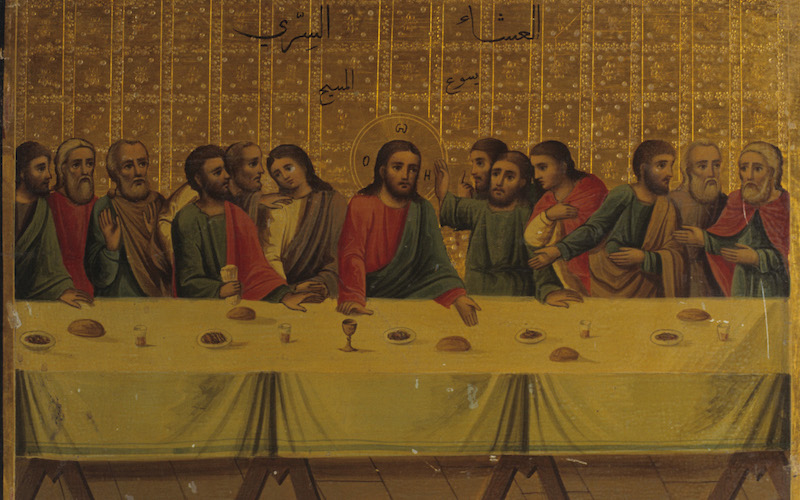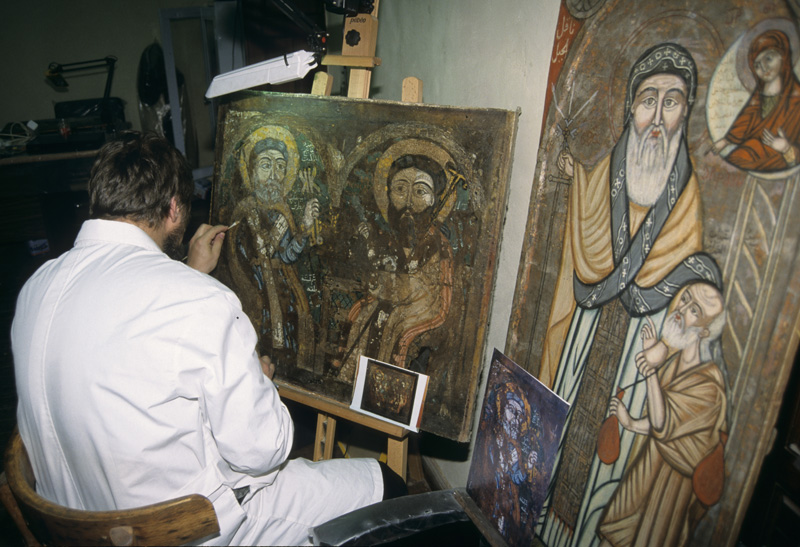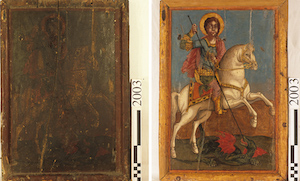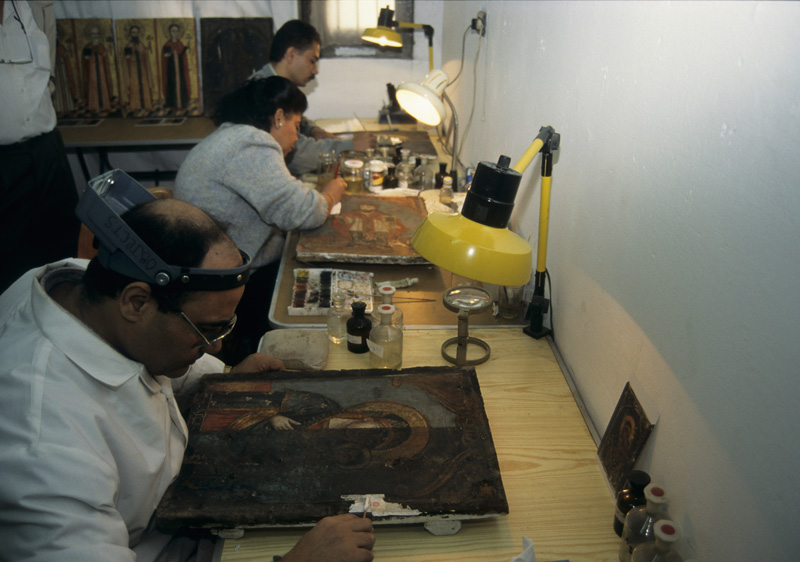- Era18th century
- Project DirectorShawki M. Nakhla
- LocationCairo
- AffiliationInstitute of Coptic Studies|Royal Netherlands Embassy
- Project SponsorUSAID
- Project Dates1998-2004
- Project ImplementerInstitute of Coptic Studies/ARCE
For many centuries, icons have been a prominent feature of Coptic religious heritage. Some scholars believe these images are an evolution of the renowned Fayoum portraits that were common in Egypt’s Roman period. A considerable number of icons — mostly from the 18th century – survive today. Not merely valuable for the imagery they depict, the icons are seen as a window into the spiritual world and bring the presence of the subject into the physical here and now. A formal effort to document these icons and professionally clean and preserve them had never been attempted until the American Research Center in Egypt, with assistance from the U.S. Agency for International Development and in partnership with the Royal Netherlands Embassy, initiated a project in 1998.
The project aimed to record, document and conserve known remaining icons in Egypt and included on-the-job training to project conservators and icon custodians who would care for the conserved icons. The first phase deployed a team of conservators across Egypt, tasked with visiting churches, monasteries and ecclesiastical residences and recording the icons present in order to compile an inventory.
The inventory was important not just to track and register the icons, but to compile research about the types of icons represented, their provenance and production materials. The documentation phase prioritized the icons according to the urgency of intervention and conservation work. Three general preservation campaigns followed, as well as selective conservation of particular icons. Before and after photos show the incredible impact of the conservation work. An icon from the Church of Anba Ruweis, which depicts St. George riding a horse and slaying a dragon, had darkened to the point where the imagery was barely visible. Following its cleaning and conservation treatment, the colorful and striking image of St. George was renewed completely.
In collaboration and mutual cooperation and support with the Supreme Council of Antiquities and the Coptic Church, on-site conservation workshops were set up in a number of key locations, such as the Hanging Church in Old Cairo, Mari Girgis Church in Cairo, Deir Anba Abraam in Fayoum, Akhmim in Sohag and El Quossiyia in Assiut. Under the direction of Shawki Mehani Nakhla and co-director Father Maximous El Antony, two to three conservators and a handful of trainees were stationed in each conservation workshop to treat the icon collections. The team was assisted by Russian and French restoration specialists. To Nakhla, one of the key successes of the project was on-the-job training.
“Four local trainees with backgrounds in restoration, science and applied art were placed in each workshop, and they not only played an important role in the protection of the collections, but they became aware of things like environmental hazards and protective methods that they can apply in any church they work in in the future,” Nakhla elaborated.
In total between 2001 and 2004, the project treated 287 icons from 21 different churches, monasteries and ecclesiastical residences, including 172 in Cairo, 51 in Fayoum and 64 in Sohag and Assiut. Among the more valuable finds were a number of medieval period icons, which were previously assumed by scholars to be lost forever. The project secured long-term preservation of the treated icons and raised custodial awareness of their value to ensure their continued care and survival.
While the 172 preserved icons do not reflect the total number of icons extant in Egypt, ARCE’s project pioneered documentation and preservation of these important relics and empowered local custodians and conservators with the practical knowledge and skills to care for the icons beyond the project’s completion. With the inventory created by Nakhla’s team, future projects may advance ARCE’s efforts to preserve these historically, culturally and religiously valuable Egyptian Coptic icons.




